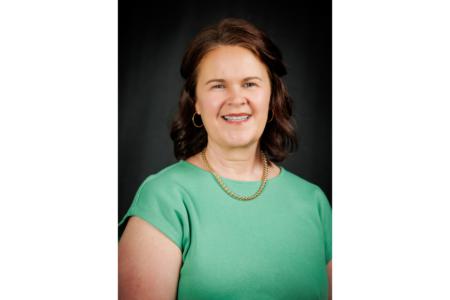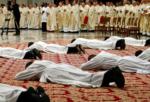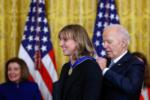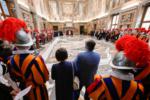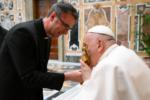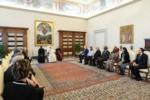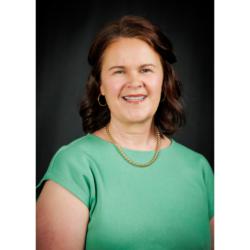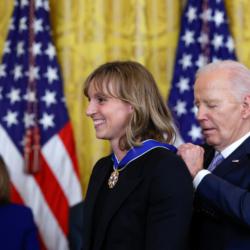Notre Dame Academy from Roxbury to Hingham
Notre Dame Academy in Hingham, Massachusetts, has roots cultivated by the Sisters of Notre Dame de Namur through three centuries. From its beginning in pre-Civil War Boston in 1854, through the Know-Nothing threats with an invasion of their Roxbury convent, through the filling in of the Back Bay and the South End, which expanded the available land in Boston, and through two world wars, which then required a larger school to accommodate the post-WWII baby boomers who were just beginning high school. The history is one of grit and commitment to education and the larger community.
Pre-Civil War Boston was teeming with Irish Catholics who came by boatloads from their ravaged island. After arriving in 1849 and immediately establishing a school in the North End of Boston, the Sisters of Notre Dame de Namur were invited by numerous clergy to open schools in other sections of Boston. It took time for the number of sisters to match the extensive needs of the Catholic population. There were no Catholic schools for girls of any age after the burning of the Ursuline convent and school in 1834. At the same time as the North End school was expanding, the sisters followed the Irish to St. Patrick in Lowell in 1853.
In 1854, Father John McElroy, SJ, who carried the initial request for sisters to the Archbishop of Cincinnati, once again accompanied them to the Roxbury section of Boston, where St. Francis de Sales and St. Joseph parishes welcomed them with great enthusiasm. In addition to beginning a school in a primitive building, the sisters taught catechism and sacramental preparation in both parishes.
"While the pastor welcomed them enthusiastically, the accommodations proved less than ideal; the convent and the Roxbury Academy schoolrooms were dirty and needed repairs. In addition, the dampness of the basement where they taught caused many Sisters to become sick. Distressed at the constant illness of her sisters, Sister Louise, the Superior of the Eastern United States, informed the pastor that unless he provided healthy schoolrooms for her Sisters to teach the children and a clean convent for their home, she would remove them from Roxbury. This request had its intended effect. Collections were taken up in the church to construct new schoolrooms, which were completed in November 1855 by a well-known Catholic architect, Patrick Keeley. The Academy could now accept boarders." (American Foundations of the Sisters of Notre Dame de Namur, Sister Mary Patricia, SNDdeN)
Living on the narrow strip of land known as Boston Neck during the years leading up to the Civil War was dangerous. "Bigotry against Catholics was rampant at that time, and the Massachusetts Legislature did not rise above its narrowness. On March 26, 1855, 24 men arrived at the door of the Roxbury convent and asked for entrance into the buildings, saying the Legislature had sent them with a demand to examine the rooms. The Sisters greeted them courteously. Without waiting to be conducted, they rushed everywhere, opening every door, closet, and drawer, interrogating the children about their treatment, and scaring them. The intrusion became a source of major controversy, and Boston's third Bishop John B. Fitzpatrick wrote a strong protest letter to the Legislature. A local paper, The Boston Daily Advertiser, condemned the invasion of the convent, which prompted a formal investigation. Sister Mary Aloysius, the Superior, was obliged to attend multiple hearings with no definitive judgment ever given in favor of the Sisters." However, the situation did influence curbing further local investigations by "The Smelling Committee," as the Know-Nothing group had been named.
The Boston Neck peninsula, along present-day Washington Street, was not fully occupied until after the Civil War. In 1873, city authorities put a "pest house" for patients suffering from smallpox very near the school grounds. Disease broke out among some students, all of whom recovered. This neighborhood then welcomed Boston City Hospital.
In July 1874, Sister Mary Aloysius embarked on a journey by ship with two other sisters to the Sisters of Notre Dame Motherhouse in Namur, Belgium, for a jubilee celebration. On July 13, she went on deck early for her meditation and collapsed and died from a heart attack with only a stewardess present! The next day, she was buried at sea. Her memorial stone stands in the archives in Ipswich. (The Finger of God, Sister Miriam of the Infant Jesus, SNDdeN)
The new Cathedral of the Holy Cross of the newly created metropolitan Archdiocese of Boston opened in 1875 in Boston's South End. The sisters were also part of a neighborhood group that sought to stop the building of an elevated railroad system along Washington Street in 1908, the noise from which significantly disrupted their lessons throughout the school day. Although the neighbors were unsuccessful in their protests, the school received $25,000 as a partial remuneration for the depreciation of their estate.
The buildings on Washington Street continued to expand through the years to accommodate the changing demographics, and the Sisters of Notre Dame de Namur adapted their school to the needs of their students until urban development in Boston during the early 1960s doomed their buildings. Using the money from a compensation package from the city, Richard Cardinal Cushing purchased 55 acres of land in Hingham to build a new school that could accommodate the baby boomers who were just beginning high school. Roxbury Academy became Notre Dame Academy and continues to thrive, building upon its 170-year-old heritage as a secondary school for girls, ensuring the legacy of enduring goodness.
SISTER MARIA DELANEY, SNDDEN, HAS BEEN A SISTER OF NOTRE DAME DE NAMUR FOR NEARLY 60 YEARS. SHE TAUGHT AND ADMINISTERED AT SEVERAL SECONDARY SCHOOLS IN THE BOSTON ARCHDIOCESE AND WAS THE FIRST DIRECTOR OF THE NOTRE DAME EDUCATION CENTER IN SOUTH BOSTON. FOR 12 YEARS, SHE WAS BASED IN ROME, ITALY, AS A NOTRE DAME DE NAMUR CONGREGATIONAL LEADERSHIP TEAM MEMBER, FOLLOWED BY SEVEN YEARS MINISTERING IN THEIR U.S. SPONSORSHIP OFFICE. SHE HAS ALSO SERVED ON THE BOARD OF DIRECTORS OF THE INTERNATIONAL CATHOLIC EDUCATION ASSOCIATION AND, MOST RECENTLY, AS THE SISTERS' INTERIM NGO DELEGATE TO THE UNITED NATIONS.
